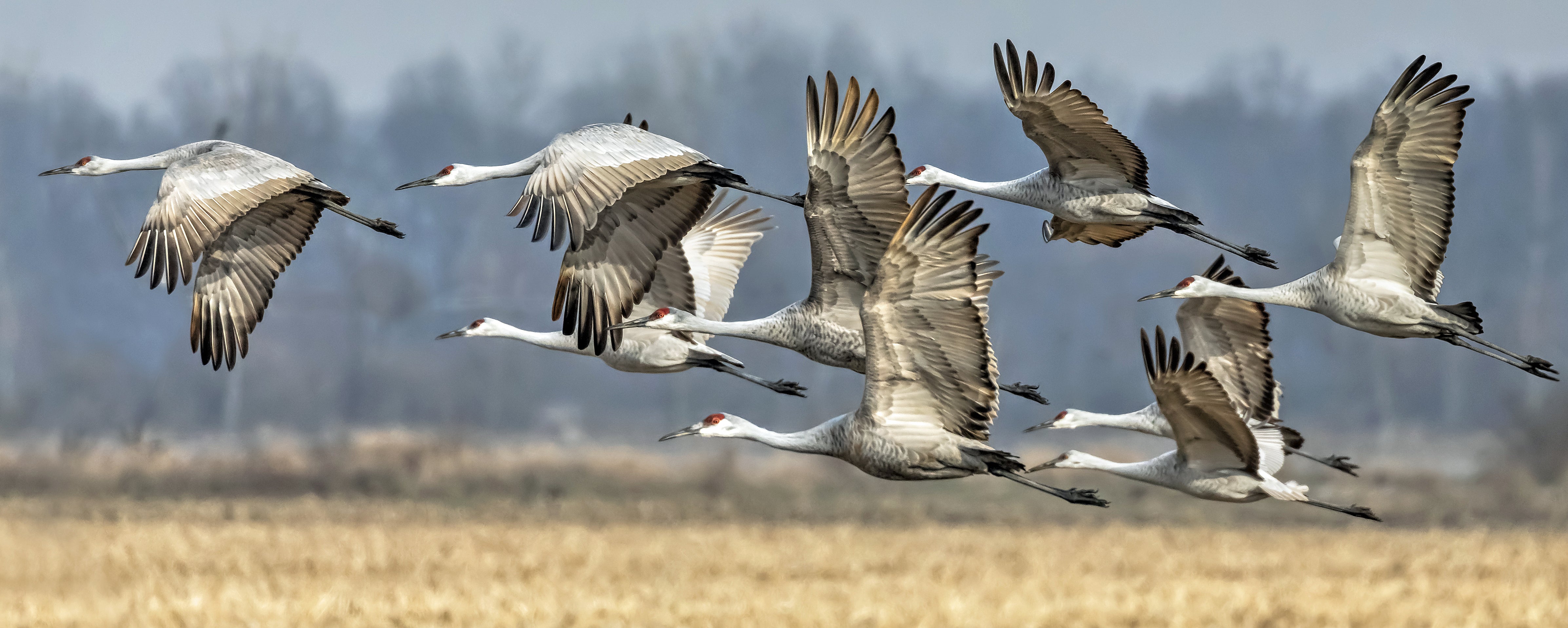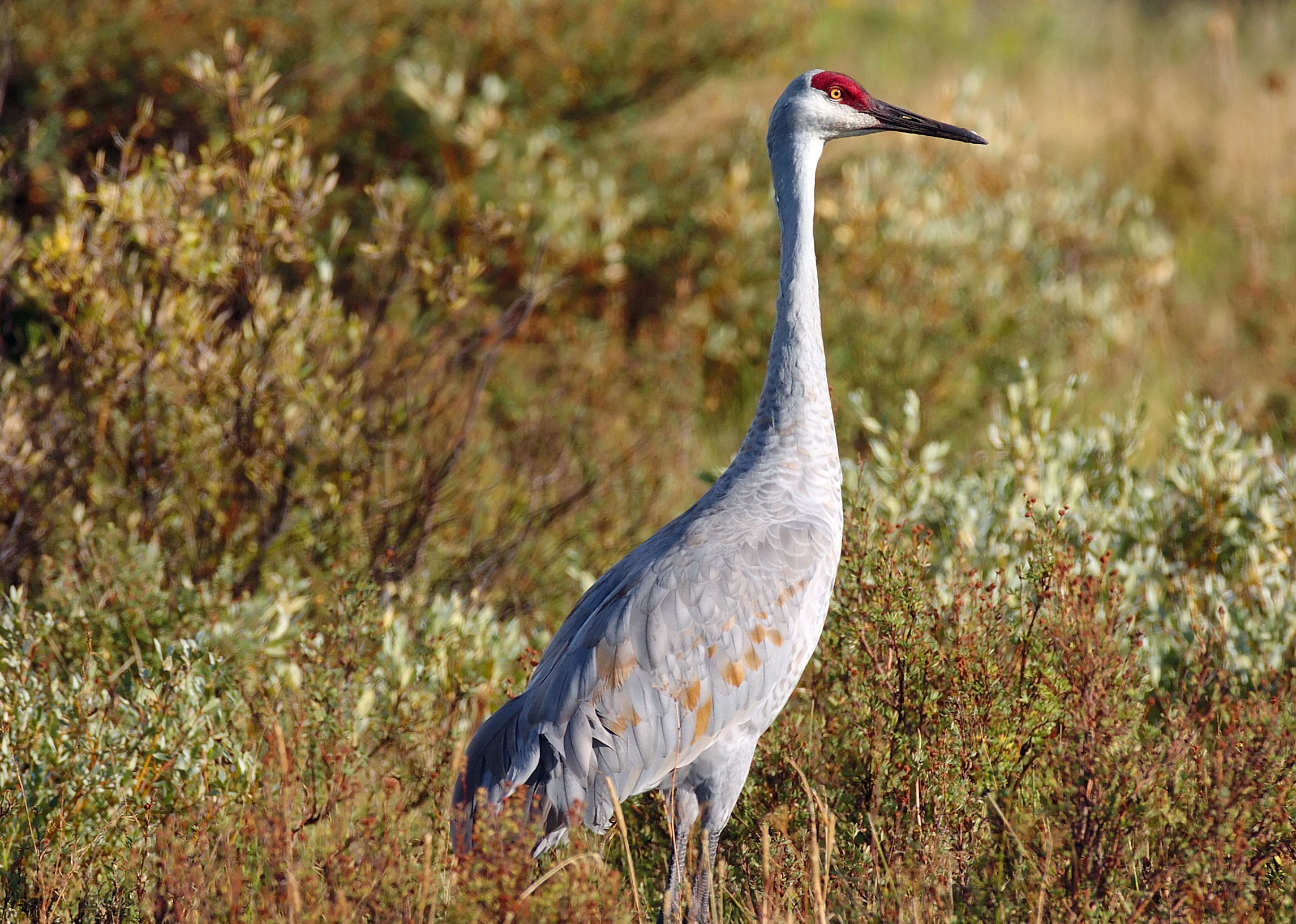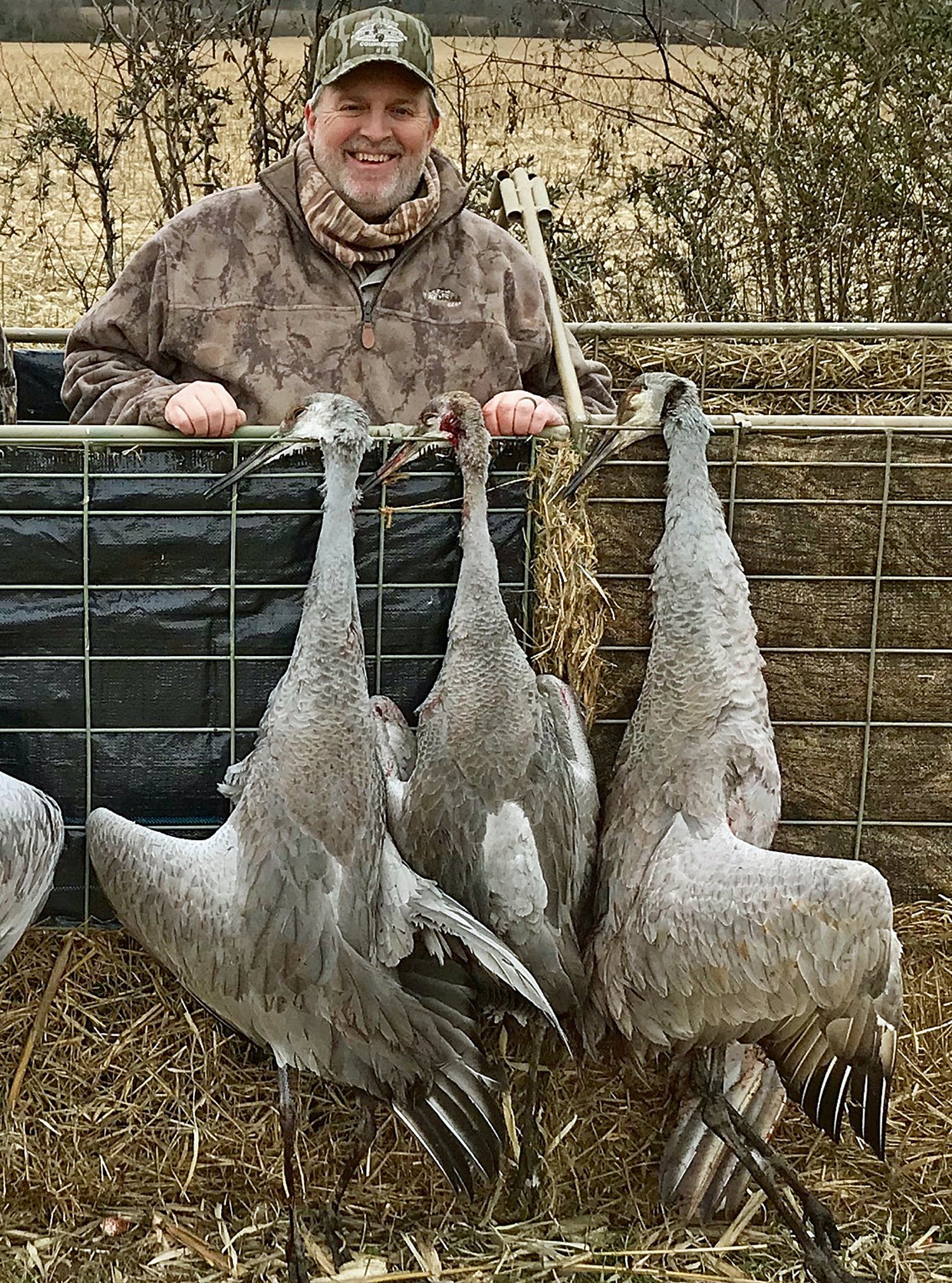By DAVID RAINER, Alabama Department of Conservation and Natural Resources
Alabama hunters will have their first opportunity in 103 years to hunt a migratory bird that has been making a steady comeback for the past few decades.
The Alabama Wildlife and Freshwater Fisheries (WFF) Division will conduct a draw hunt of 400 permits to hunt sandhill cranes, becoming the third state east of the Mississippi River to hold a sandhill hunt.
“The last sandhill crane hunting in Alabama was in 1916,” said Seth Maddox, WFF Migratory Game Bird Coordinator. “This is the first time in 13 years that we’ve had a new species open to hunting. The last was alligator in 2006. It’s pretty exciting.”
The sandhill crane season will be split with the first segment from December 3, 2019, to January 5, 2020. The second segment will be January 16-31, 2020.
The daily, season and possession limit will be three birds per permit. Hunters can harvest all three birds in one day if they choose.
“This sandhill crane season came about through the feedback of hunters,” Maddox said. “They started seeing increased numbers of sandhills while they were out hunting other species, especially waterfowl. Hunters wanted the opportunity to hunt this species in Alabama. They’d heard about the seasons in Kentucky and Tennessee from their friends. Hunters have paved the way for the species recovery of sandhill crane. We want to provide hunting opportunities when they are available.”
In the early 2000s, discussions began about possible sandhill crane seasons in the Mississippi and Atlantic flyways. In the Eastern U.S. the subspecies is called the giant sandhill crane.
Maddox said by 2010 the U.S. Fish and Wildlife Service (USFWS) approved a sandhill crane management plan that included a hunt plan for the Mississippi Flyway, which includes Alabama, Tennessee and Kentucky.
“Kentucky was the first state to take advantage of that,” Maddox said. “They opened their season in 2011. Tennessee opened their season in 2013. We’ll be the third state east of the Mississippi to have a sandhill season this year.”
Thirteen states west of the Mississippi River have sandhill crane hunting seasons.
“We started counting sandhills in 2010 in conjunction with our aerial waterfowl surveys,” Maddox said. “We conduct the aerial surveys each fall and winter. Since 2010, we’ve seen a 16% increase on average per year in the state.”
In 2016, WFF staff began discussions about the possibility of a sandhill season and began the tedious process to get a hunting season approved by USFWS.
“We had to go through the Flyway (The Mississippi Flyway Council) process, just like any other state that wants to add a new season on migratory birds,” Maddox said. “We began discussing that with the Flyway. We gathered all of our data and put together a proposal for a hunt plan. It took a couple of years to get through that process.”
When that effort was completed, Alabama was granted a three-year experimental season, beginning in 2019.
WFF opted to make the season a limited draw with 400 permits that will be issued through a computer-controlled random draw. Those drawn must complete the process. Once approved, each permittee will be issued three tags for a maximum total harvest of 1,200 birds.
The registration process is limited to Alabama residents 16 or older or Alabama lifetime license holders. Applicants must have their regular hunting license and a state waterfowl stamp to apply.
Maddox said the registration process will open in September and be open for several weeks. The drawing will occur in October.
However, the process is not complete even if you are lucky enough to be drawn.
“If drawn, they will have to take an online test that includes species identification and regulations,” Maddox said. “Once they pass that test, we will issue the permit and tags. Then they must purchase a federal duck stamp and HIP (Harvest Information Program) license, and if hunting on a WMA (wildlife management area), a WMA license. Once they have all that, they are good to hunt.”
Maddox said the number of permits was derived from the number of sandhill cranes counted over a five-year average. The guidelines under the hunt plan allow a state to harvest 10 percent of that five-year average.
“Our five-year average is 15,029 birds,” he said. “For the experimental season, we elected to keep the harvest below 10 percent because we wanted to take it slow and ensure hunting will not be detrimental to the population.”








